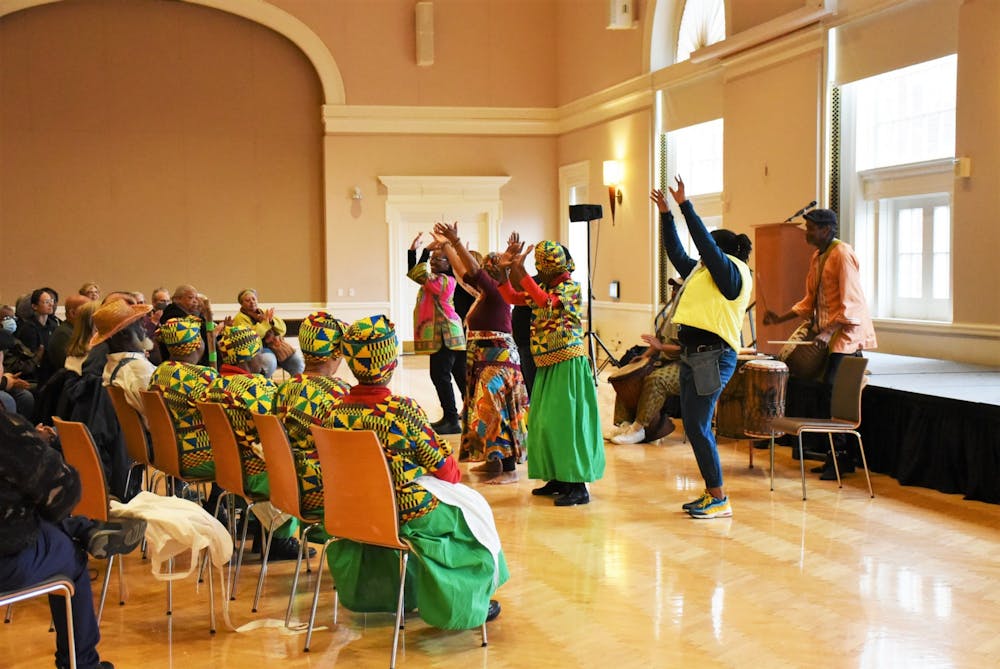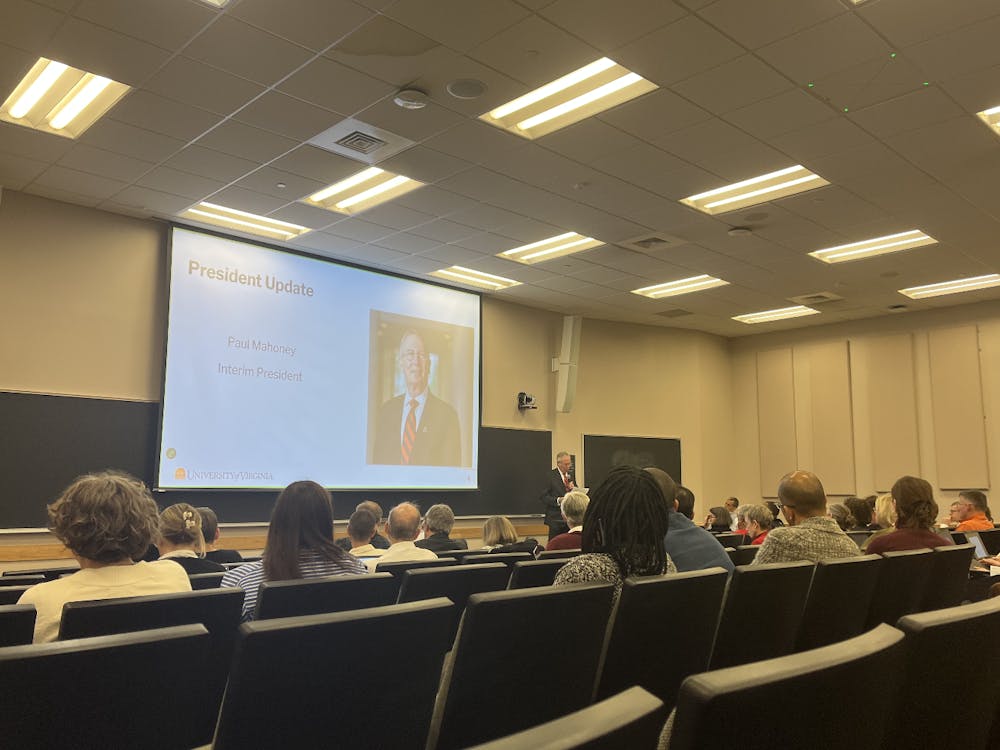Traditional West African scarves and booming steel drums filled the Newcomb Ballroom during the anniversary of Liberation and Freedom day — the March 3, 1865, liberation of thousands of enslaved laborers in Charlottesville. The event — originally scheduled to take place by the Memorial to Enslaved Laborers but moved inside due to rain — included vibrant performances by the Chihamba drumming group and the internationally-acclaimed Geechee Gullah Ring Shouters.
City Council declared March 3 a municipal holiday in 2017 to honor the 1865 arrival of Union cavalry into Charlottesville. Town and University officials surrendered at the University chapel, and thousands of enslaved residents fled with troops.
The gathering in Newcomb Ballroom began with a moment of silence to honor the free and enslaved Black community. Event leaders then read from the land acknowledgement given by the University Guide Service at the beginning of their tours. The statement honors the indigenous people who originally lived on University land and the enslaved and free Black laborers who built the University, along with their descendants.
Chihamba, an African musical group that performs at the African American Cultural Arts Festival, performed a Bronco drum call — a tradition announcing that something special is about to happen. Chihambra member Lily Williams introduced the significance of the piece and said she would call on audience members to join in the dancing.
“This is just a way of saying how much we love each other,” Williams said. “So we love each other, so we can come and get some people to come up and dance, if you don't mind.”
The group then performed a harvest call, an upbeat song played to aid the year’s crop. More community members joined in dancing up front and clapping along to the melody.
Jessica Harris, interim co-chair for the Descendants of Enslaved Communities at U.Va, connected the day’s events back to the MEL — the planned site for the celebration. She read a poem written by graduate Batten student Jayla Hart entitled “My Serpentine” —- a reference to the winding walls behind the University pavilions. The poem references the University’s history fraught with enslaved laborers.
“When did hate become cemented between these bricks, my serpentine, your fang marks stay swollen on my chest, trying to suck the life out of our families… trying to suck the truth out of our histories,” the poem reads.
Harris then turned to the design of the MEL, saying the memorial’s ring shape ties back to the traditional ring shout practiced by enslaved Africans in the United states and West Indies. The religious ritual involves a circular movement where worshippers celebrate through dance, shouts and percussion.
Harris introduced the Geechee Gullah Ring shouters, a group known internationally for its work with BBC World News, CNN International News and the Netflix documentary “High on the Hog.”
“This ring shout symbolizes celebration and liberation, and on Liberation and Freedom Day it is important to celebrate this tradition, and that is why the rain shouters are here today,” Harris said.
The group, composed of women donning traditional Geechee Gullah head wraps, aprons and dresses, along with men in overalls, performed “Kumbaya,” a widely known African American spiritual song whose chorus was originally “come by here.” Next, they sang “Amazing Grace,” a hymn written by a former slave trader who later turned towards religion.
Along with song and dance, members of the group explained their culture through humorous dialogue, touching on the significance of herbal remedies, their unique dialect and the meanings of their hair wraps —- the alignment of the knot signifies whether a woman is single, married or widowed.
Following the ring shouters, Harris harkened back to Isabella Gibbons, an enslaved laborer in Pavilion XI at the University whose eyes are depicted on the back of the MEL. Upon Liberation and Freedom day in 1865, she continued to live in Charlottesville and became an educator at the Jefferson School, showing the importance of liberation for the local community.
“Her eyes are forever fixed on the Memorial [to] Enslaved Laborers to honor her legacy,” Harris said.







